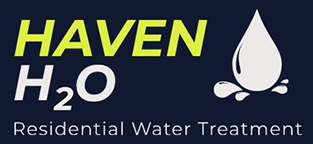Clean drinking water is a fundamental necessity for maintaining our health and well-being. However, the presence of emerging contaminants, such as per- and polyfluoroalkyl substances (PFAS), has raised concerns about the safety of our water supply. In this blog post, we will delve into the topic of PFAS and its potential impact on drinking water. We will explore what PFAS are, why they are a cause for concern, and how you can take steps to ensure that your drinking water remains safe and free from these contaminants.
What are PFAS?
Per- and polyfluoroalkyl substances (PFAS) are a group of synthetic chemicals that have been widely used in industrial, commercial, and consumer products due to their water and grease-resistant properties. They can be found in items such as non-stick cookware, water-resistant clothing, firefighting foam, and food packaging. These chemicals have become pervasive in the environment, including water sources, due to their persistent nature and resistance to degradation.
The Concern for Drinking Water
One of the most pressing concerns regarding PFAS is their presence in drinking water sources. PFAS chemicals can leach into groundwater and surface water from various sources, including industrial discharges, firefighting training sites, and wastewater treatment plants. Once they enter water sources, they can be difficult to remove through traditional water treatment processes.
Health Implications
Exposure to PFAS through contaminated drinking water has been associated with potential health risks. Some studies have linked exposure to PFAS with adverse health effects, including liver damage, thyroid disorders, immune system suppression, and certain types of cancer. Infants, pregnant women, and individuals with compromised immune systems are particularly vulnerable to the potential effects of PFAS exposure.
Regulations and Guidelines
Recognizing the potential risks posed by PFAS, regulatory agencies in various countries have begun to set guidelines and standards for safe PFAS levels in drinking water. For instance, the U.S. Environmental Protection Agency (EPA) has issued a drinking water health advisory for two common types of PFAS – perfluorooctanoic acid (PFOA) and perfluorooctanesulfonic acid (PFOS) – recommending a combined limit of 70 parts per trillion (ppt).
Steps to Ensure Safe Drinking Water
- Stay Informed: Regularly check for updates from local water authorities and government agencies about water quality in your area. They often conduct tests and provide information about any emerging contaminants, including PFAS.
- Water Testing: Consider testing your drinking water for PFAS contamination. You can contact certified laboratories that offer water testing services to determine if PFAS levels are within acceptable limits.
- Filtration Systems: Invest in effective water filtration systems that are capable of removing PFAS. Look for certified filters that have been tested and verified to effectively reduce PFAS levels in water.
- Bottle Your Own Water: If you’re concerned about the quality of your tap water, you can opt for bottled water from reputable brands that provide information about their water sourcing and treatment processes.
- Advocate for Change: Support efforts to regulate and control the use of PFAS in products and industrial processes. Advocate for stricter regulations and proper waste disposal practices to prevent further contamination.
Ensuring safe and clean drinking water is a collective responsibility. While PFAS contamination poses challenges, staying informed, testing your water, and investing in effective filtration systems can help protect you and your family from potential health risks associated with these emerging contaminants. By taking proactive steps and advocating for cleaner water sources, we can contribute to the preservation of one of our most vital resources – clean and safe drinking water.

